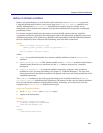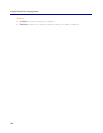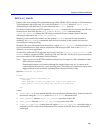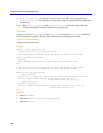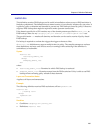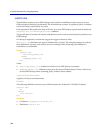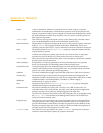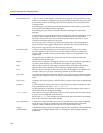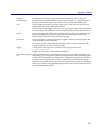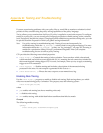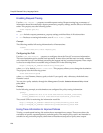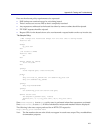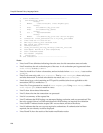
Appendix A: Glossary
actions A class of definitions. CPL has two general classes of actions: request or response
modifications and notifications. An action takes arguments (such as the portion of the
request or response to modify) and is wrapped in a named action definition block. When
the action definition is turned on by the policy rules, any actions it contains operate on
their respective arguments.
<Admin> layer One of the five layer types allowed in a policy. Used to define policy rules that control
access to the Management Console and command line interface (CLI).
admin transaction Encapsulation of a request to manage the ProxySG for the purposes of policy evaluation.
Policy in <Admin> layers applies to admin transactions. Additionally, if the user is
explicitly proxied to the ProxySG, a proxy transaction will also be created for the request.
allow The preferred short form of exception(no), a property setting that indicates that the
request should be granted.
A default rule for the proxy policy layer. You have two choices: allow or deny. Deny
prevents any access to the ProxySG; allow permits full access to the ProxySG.
<Cache> layer One of the five layer types allowed in a policy. Used to list policy rules that are evaluated
during a cache or proxy transaction.
cache transaction Encapsulation of a request, generated by the ProxySG and directed at an upstream
device, for the purposes of maintaining content in the local object store.
Central Policy File A file provided by Blue Coat Technical Support to ensure that the ProxySG behaves
correctly and efficiently when accessing certain sites. You can adapt this file to include
policies you want to share among multiple appliances.
condition A boolean combination of trigger expressions that yields true or false when evaluated.
default policy The default settings for various transaction properties taken from configuration. An
important example is the default proxy policy that is configurable to either allow or deny
definition
A definition binds a user-defined label to a condition, a content category, a
transformation or a group of actions.
deny The preferred short form of exception(policy_denied), a property setting that
indicates that the request should be refused.
Evaluation order The order in which the four policy files—Central, Local, VPM, and Forward—are
evaluated. When a file is evaluated last, the policy rules and the related configuration
settings it specifies can override any settings triggered in the other files.
The order of evaluation of the Central, Local, and VPM policy files is configurable using
the policy order CLI command or the Management Console. The Forward file is
always last in the evaluation order.
Exception layer One of the five layer types allowed in a policy. Exception layers are evaluated when an
exception property is set, forcing transaction termination. Policy in an exception layer
gives the administrator a final chance to modify the properties (such as headers) of the
response (exception) object, just as they would get a chance to modify the properties of
an object returned from the origin server or from cache.
<Forward> layer One of the five layer types allowed in a policy. <Forward> layers are only evaluated
when the current transaction requires an upstream connection.



